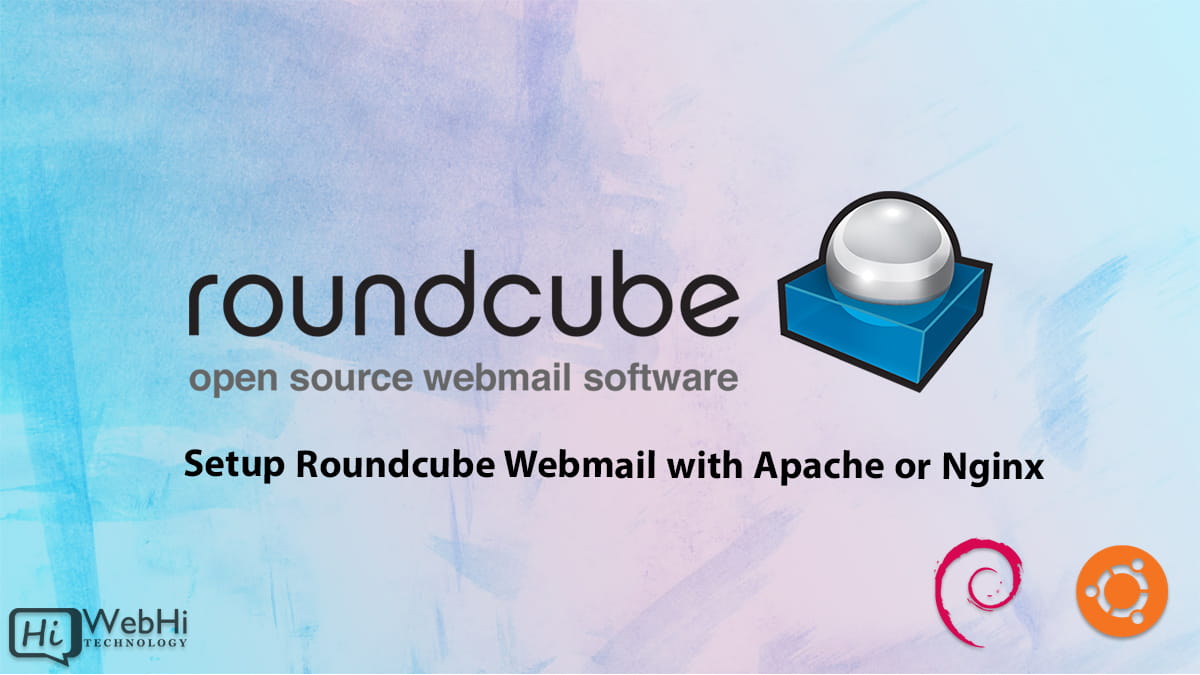
Managing email effectively is crucial for businesses and individuals. Roundcube Webmail is a popular, open-source webmail client that provides an intuitive interface for email management. Whether you are using Apache or Nginx as your web server, this guide will walk you through the complete setup process. Follow this step-by-step tutorial to get started, even if you’re a beginner.
What is Roundcube Webmail?
Roundcube Webmail is an IMAP-based, open-source webmail client written in PHP. It provides a user-friendly interface similar to desktop email clients, making it an excellent option for those who prefer managing emails through a browser. Key features include:
- Email management (read, send, reply, forward, and organize emails).
- Address book integration.
- Support for plugins to extend functionality.
- Mobile-friendly design.
Prerequisites for Roundcube Webmail Setup
Before diving into the installation process, ensure you have the following:
- A Linux server (Ubuntu 20.04 or newer recommended).
- Apache or Nginx installed.
- PHP version 7.4 or higher.
- MariaDB or MySQL database server.
- Access to DNS records for your domain.
Let’s get started with the installation and configuration process!
Step 1: Update and Upgrade Your Server
It’s essential to start by ensuring your server is updated. Run the following commands to update your package manager and upgrade installed packages:
$ sudo apt update
$ sudo apt upgrade -y Step 2: Install Required Dependencies
For both Apache and Nginx, install PHP and required modules:
$ sudo apt install php php-cli php-mbstring php-xml php-mysql php-curl php-zip unzip -y You’ll also need composer for dependency management:
$ sudo apt install composer -y Step 3: Install Apache or Nginx
Install Apache:
To set up Roundcube with Apache, install it with the following command:
$ sudo apt install apache2 -y Ensure Apache is running:
$ sudo systemctl start apache2
$ sudo systemctl enable apache2 Install Nginx:
For Nginx users, install it with:
$ sudo apt install nginx -y Start and enable the Nginx service:
$ sudo systemctl start nginx
$ sudo systemctl enable nginx Step 4: Set Up a Database for Roundcube
Roundcube requires a database to store user settings and data. You can use MariaDB or MySQL.
Install MariaDB:
$ sudo apt install mariadb-server -y Secure the MariaDB installation:
$ sudo mysql_secure_installation Create a Roundcube Database:
Log into the database:
$ sudo mysql -u root -p Run the following SQL commands to create a database and user for Roundcube:
CREATE DATABASE roundcubemail;
CREATE USER 'roundcubeuser'@'localhost' IDENTIFIED BY 'strongpassword';
GRANT ALL PRIVILEGES ON roundcubemail.* TO 'roundcubeuser'@'localhost';
FLUSH PRIVILEGES;
EXIT; Step 5: Download and Install Roundcube
Visit the Roundcube official website and get the latest version of Roundcube. Alternatively, download it using the command line:
$ wget https://github.com/roundcube/roundcubemail/releases/download/1.6.9/roundcubemail-1.6.9-complete.tar.gzExtract the downloaded file:
$ tar -xvzf roundcubemail-1.6.9-complete.tar.gz Move the files to your web server’s root directory:
$ sudo mv roundcubemail-1.6.9 /var/www/roundcube Set appropriate permissions:
$ sudo chown -R www-data:www-data /var/www/roundcube
$ sudo chmod -R 755 /var/www/roundcube Step 6: Configure Apache for Roundcube
Create a new configuration file for Roundcube:
$ sudo nano /etc/apache2/sites-available/roundcube.conf Add the following configuration:
<VirtualHost *:80>
ServerName yourdomain.com
DocumentRoot /var/www/roundcube
<Directory /var/www/roundcube>
Options FollowSymLinks
AllowOverride All
Require all granted
</Directory>
ErrorLog ${APACHE_LOG_DIR}/roundcube_error.log
CustomLog ${APACHE_LOG_DIR}/roundcube_access.log combined
</VirtualHost> Enable the site and restart Apache:
$ sudo a2ensite roundcube.conf
$ sudo systemctl restart apache2 Step 7: Configure Nginx for Roundcube
For Nginx users, create a new configuration file:
$ sudo nano /etc/nginx/sites-available/roundcube Add this configuration:
server {
listen 80;
server_name yourdomain.com;
root /var/www/roundcube;
index index.php index.html;
location / {
try_files $uri $uri/ /index.php;
}
location ~ \.php$ {
include snippets/fastcgi-php.conf;
fastcgi_pass unix:/var/run/php/php7.4-fpm.sock;
fastcgi_param SCRIPT_FILENAME $document_root$fastcgi_script_name;
include fastcgi_params;
}
location ~ /\.ht {
deny all;
}
} Enable the configuration and restart Nginx:
$ sudo ln -s /etc/nginx/sites-available/roundcube /etc/nginx/sites-enabled/
$ sudo systemctl restart nginx Step 8: Complete Roundcube Installation via Web Interface
- Open your browser and navigate to
http://yourdomain.com/installer. - Follow the on-screen instructions to verify dependencies and configure the database.
- Enter the database details created earlier (e.g.,
roundcubemail,roundcubeuser, and your password). - Complete the installation process and remove the installer directory for security:
$ sudo rm -rf /var/www/roundcube/installer Step 9: Configure DNS for Webmail
To access Roundcube via webmail.yourdomain.com, set up a DNS A record pointing webmail to your server’s IP.
Step 10: Secure the setup with HTTPS
Use Let’s Encrypt to secure the connection. Install Certbot:
$ sudo apt install certbot python3-certbot-apache -y For Apache:
$ sudo certbot --apache -d yourdomain.com -d webmail.yourdomain.com For Nginx:
$ sudo apt install python3-certbot-nginx -y
$ sudo certbot --nginx -d yourdomain.com -d webmail.yourdomain.com Ensure the certificate is renewed automatically:
$ sudo systemctl enable certbot.timer Troubleshooting Common Issues
Database Errors
- Check your database credentials in
config/config.inc.php. - Ensure the database user has necessary permissions.
PHP Errors
- Verify installed PHP modules.
- Check
php.inifor configurations likememory_limitandupload_max_filesize.
FAQs
How do I access Roundcube after installation?
Access it via your browser at http://yourdomain.com or http://webmail.yourdomain.com.
What is the default login for Roundcube?
Roundcube does not create default logins. Use your email credentials configured on the mail server.
How do I enable plugins in Roundcube?
Copy the plugin files to the plugins/ directory and activate them in config/config.inc.php.
Can I integrate Roundcube with other email servers?
Yes, Roundcube works with any IMAP server like Postfix or Dovecot.
How do I reset a Roundcube user password?
Password resets must be managed at the mail server level.
Is Roundcube free to use?
Yes, Roundcube is open-source and free to use under the GPL license.
Conclusion
Setting up Roundcube Webmail with Apache or Nginx is straightforward if you follow the steps carefully. With a modern interface and powerful features, Roundcube is an excellent choice for managing emails via the web. By securing your setup and integrating it with DNS, you can provide a reliable webmail experience.
